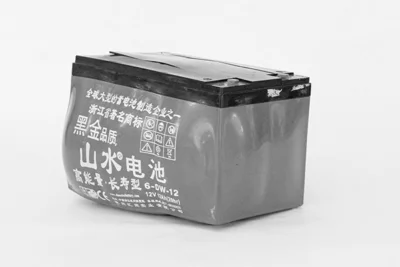There is a possibility that readers are reading this article on their mobile phones or perhaps on laptops, quite likely without a connection to a power source but still operational thanks to a battery. This battery is likely to be a lithium-ion battery (LIB), much akin to the ones propelling e-scooters, e-bikes, or electric vehicles.

Image Credit: H.E.L Group
A cursory look at the news or a more extensive examination of newspaper archives reveals numerous fires linked to this battery type's malfunction.
This article will explore thermal runaways' intriguing yet perilous realm – their origins, associated risks, and prevalence in some of today's most advanced technologies.
This article will also explore how this phenomenon has posed challenges to the chemical industry, influenced legislative measures, and examine efforts to mitigate potential hazards.

Image Credit: H.E.L Group
What are Thermal Runaways?
Thermal runaways are processes wherein a temperature rise modifies conditions in a manner that induces further temperature increases, potentially resulting in destructive outcomes. This escalating sequence of events lends the process its name – much like a snowball gathering speed and size while descending a slope.
But how does a thermal runaway occur? These events unfold when an exothermic reaction can, in turn, contribute to itself. Consequently, the reaction generates heat, elevating the temperature near the reactions, leading to swifter reaction rates.
The self-accelerating nature of a thermal runaway renders it potentially hazardous.
Once the process initiates, halting it becomes exceedingly challenging. Due to the physicochemical characteristics of this process, it can trigger significant increases in temperature and pressure. The repercussions of such a process can be dire, encompassing fires and explosions.
Why Do We Care About Thermal Runaways?
The chemical industry is well-acquainted with thermal runaways, with some of the most significant accidents associated with these processes. Certain reactions, such as polymerization and decomposition, are particularly susceptible.
In recent times, there has been an increase in reported thermal runaways in a completely different domain: batteries, particularly in electric vehicles (EVs), e-scooters, and e-bikes.
For instance, the BBC reported that in London alone, fires linked to e-scooters or e-bikes occur every two days, marking a 60% increase in just one year.
In July 2023, a fire occurred on a ship transporting 3000 vehicles from Germany to Egypt off the Dutch coast, resulting in one fatality, several injuries, and the ship's evacuation.
Growing safety concerns regarding lithium-ion batteries (LIBs) have led non-governmental organizations (e.g. Electrical Safety First) to pressure the current UK Government to mandate third-party approval for vehicle batteries.
Between 95% and 99% of all batteries used for transportation are lithium-ion batteries. Nevertheless, LIBs are also susceptible to thermal runaway processes. Situated between the anode and the cathode, the electrolyte serves as the medium through which ions can move.
However, this substance is usually an organic salt, like ethylene carbonate. This molecule is susceptible to decomposition, producing flammable organic gases that accumulate inside the batteries, as indicated by the batteries' deformation.
The cathode, typically containing metal oxides (e.g. cobalt oxide), can also undergo decomposition reactions, producing oxygen. The combination of heat released during the charge/discharge process and the accumulation of organic gases creates an ideal condition for fires.
How is Battery Safety Being Increased?

Image Credit: H.E.L Group
Lithium-ion batteries (LIBs) are not flawless, and the reported accidents associated with fires serve as strong evidence of their imperfections. Nevertheless, manufacturers and developers persistently endeavor to enhance battery safety. An excellent tool for this purpose is calorimetry.
It is crucial to subject batteries to testing in conditions that mimic charge/discharge cycles, including worst-case scenarios like physical battery damage, enforced short circuits, and overheating. These testing conditions should encompass both fully charged and discharged batteries.
Methods such as heat-wait-search (HWS) play a vital role in this endeavor. HWS involves placing the battery in calorimeters equipped with heaters that progressively elevate and maintain the temperature.
When the temperature probes detect a temperature increase (exotherm) indicating a runaway reaction, this signifies a danger threshold that batteries should never reach to prevent hazardous situations, including during storage.
Apart from testing, it is fundamental to equip batteries with preventative tools. One widely adopted approach is the use of separators.
In LIBs, separators function as physical barriers between the anode and cathode while permitting the movement of lithium ions. When a battery overheats and there is a risk of thermal runaway, these separators alter their behavior, impeding further ion movement and consequently halting chemical reactions within the battery.
Recent advancements in battery research have led to solid-state batteries. These batteries employ materials like ceramics or glass instead of flammable liquids as electrolytes.
They still permit the movement of lithium ions but offer significant benefits, including enhanced chemical stability, prevention of decomposition reactions, and the avoidance of flammable gas production.
Looking into The Future
Understanding and preventing thermal runaway events has become increasingly vital in a world progressively shifting toward electrification and larger energy storage needs. The challenges posed by LIBs' safety concerns cannot be underestimated.
Looking into the future, however, there is optimism regarding technological and innovative advances aimed at creating a safer and more sustainable world.
A better grasp of the conditions that trigger hazardous situations for batteries, such as high temperatures and physical damage, is gained through rigorous testing methods like calorimetry.
Ongoing research continues to yield innovative solutions to enhance battery safety, including the incorporation of separators and the emerging use of solid-state batteries. These developments showcase the capacity to innovate and the responsibility to create sustainable and secure solutions for the future.
The challenge of thermal runaway is indeed substantial, but it is being addressed with ingenuity, diligence, and an unwavering commitment to continuous improvement.

This information has been sourced, reviewed and adapted from materials provided by H.E.L Group.
For more information on this source, please visit H.E.L Group.